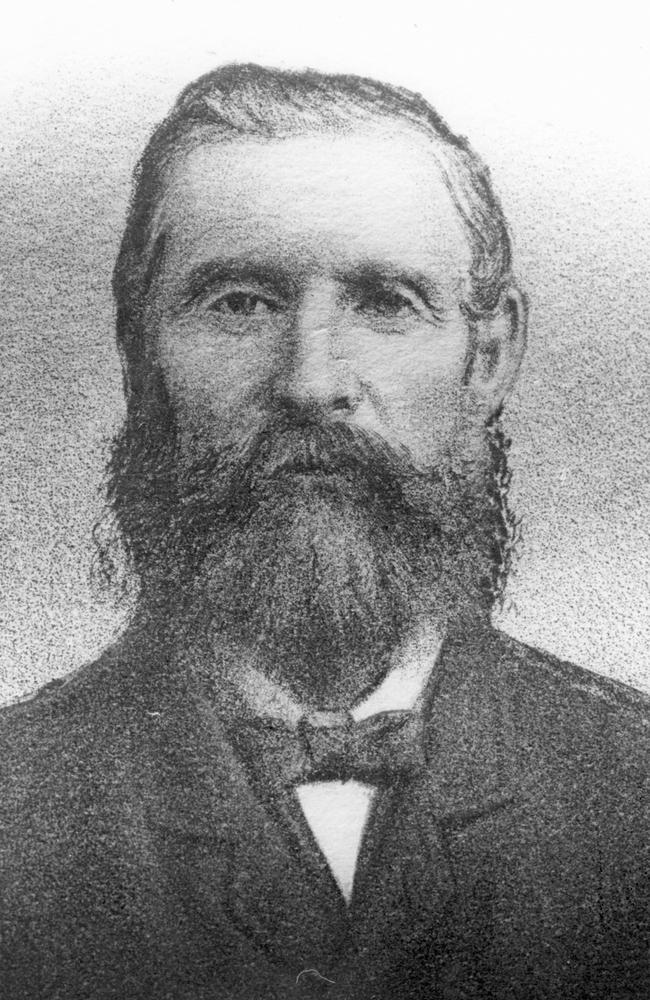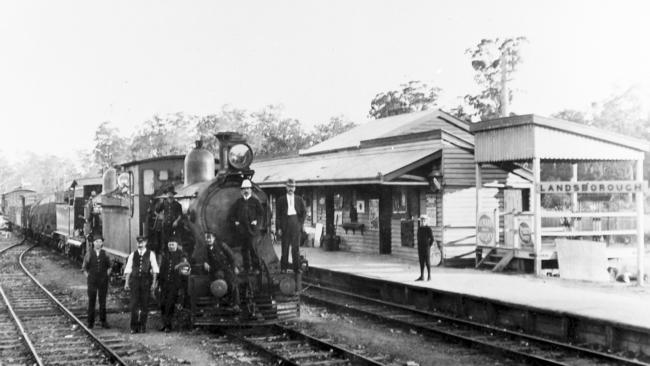Way We Were: Campbellville was a Queensland town that disappeared from the map
Once a bustling township with a working sawmill, Campbellville disappeared. All that now remains are some graves in Beerburrum forest, writes Dot Whittington.
QLD News
Don't miss out on the headlines from QLD News. Followed categories will be added to My News.
ON a warm Monday night in February 1884, John Andrew Lovesey got up to dance while one of his fellow workers from the Coochin Creek sawmills at Campbellville cranked the handle of an organette.
Lovesey, known as Andrew, was a step dancer and was showing off some fancy footwork.
He asked young Cramb, who was in charge of the music, to play slower so he could show them a new step.
After just a few moves, he moaned, dropped to the floor and expired.
The 37-year-old sawmiller who had frequently complained of heart pain, was buried in the Campbellville cemetery and consigned to history, ultimately like the town itself.
On the banks of Coochin Creek about 4km upstream from Pumicestone Passage at the northern end of Bribie Island, it was abandoned in 1891, and there was little left to show for its heyday when residents partied until daybreak.

Campbellville, a bustling township for a decade from 1881, was named for James Campbell, who had made a name for himself as a building materials supplier after arriving in Moreton Bay from Scotland as a 23-year-old in 1853.
He had trained as a plasterer, but soon discovered that while there was little work in his trade, new settlers in a growing colony needed to build houses.
He founded his business in 1854, supplying lime, cement and plaster and then turned his attention to the valuable cedar, pine and hardwood timbers of the Blackall Range.
In 1881, he opened a sawmill at the junction of Mellum and Coochin Creeks and the township quickly grew with cottages for employees, a store and post office as well as a small provisional school – and a cemetery.
In January 1883, Campbell’s ship, the Mavis, became the first steamer to run to Bribie Island and for the next seven years it had weekly services between Campbellville and Brisbane.
With a population of about 100, Campbellville was a thriving little township where for a decade, residents worked hard and partied harder.
There were regular reports of big celebrations at the James Campbell and Sons store which would be decorated with flags and ferns.
Friday, June 27, 1884, it was said, would long be remembered in the annals of Campbellville, as it was the first anniversary of the temperance organisation Band of Hope.
Visitors came from miles around in the afternoon and after supper, danced until early morning, “thus closing one of the pleasantest days spent in this place since its establishment four years ago.”
A year later, it was repeated when “this place, usually so quiet excepting the whirl of the sawmills”, again came alive with 150 people arriving. And again, they danced through the night.

The Campbellville Athletic Club, formed by the mill hands, had great success at football and cricket matches and in 1866, opened the cricket season with musical entertainment, supper, and dance.
The ladies were charming and stylish in sateen, silk and cashmere; lace, ribbons and gloves to match, and the dancing was spirited until daylight.
By 1889, up to 400 guests from all parts of the district were dancing until dawn.
Meanwhile, the mill was in full swing, and the company was paying more than £1000 a month to its workers, but the end was near.
The opening of the railway line from Brisbane to Landsborough in 1890 sounded the death knell for Campbellville. It was an easier and cheaper way to transport timber, and the sawmill closed.
Machinery was taken to the Campbells’ Albion mill in Brisbane and buildings were relocated.
The mail service from Mellum Creek, which was now being called Landsborough, was discontinued in 1891, and the township and those who danced there faded into history.
The great flood of 1893 that devastated Brisbane destroyed what little remained of the town and silt blocked the waterways.
It would be 75 years before Lovesey’s Campbellville grave, along with possibly nine others, re-emerged from the bush.
Forestry workers in the Beerburrum State Forest came across some old hardwood posts in 1966. Headstones, likely wooden, were long since gone, but it was clearly a cemetery.
Today a sign in the forest off the busy M1 near Beerwah, declares Campbellville one of the first European pioneer settlements north of Brisbane but “all that is left to remind us of its existence are the remains of this small cemetery.”
James Campbell and Sons dominated the building supply industry in the second half of the 19th century. In 1995, Campbell’s Timber and Hardware was absorbed into the BBC Hardware chain and in 2001, that was absorbed into Bunnings.
Like Campbellville and Andrew Lovesey, its time was up.




